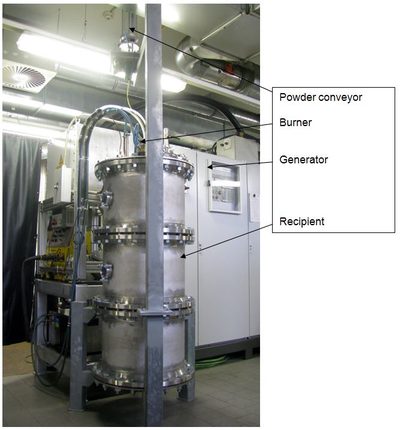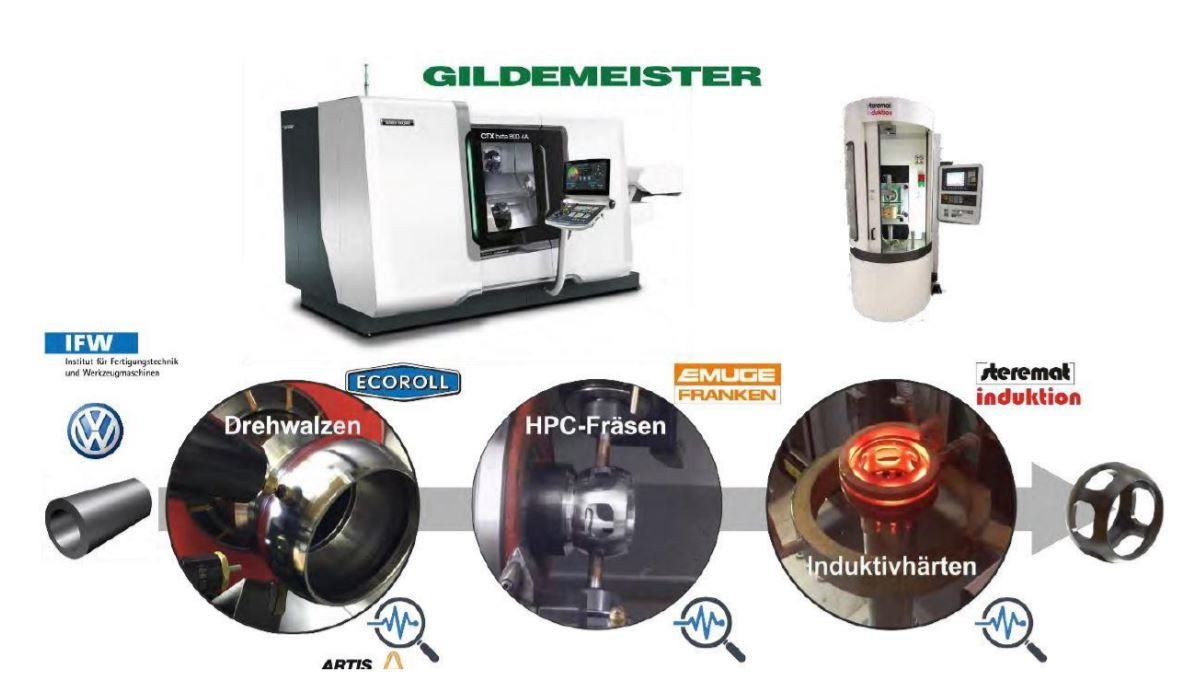Promoter
The cooperation project KF3129103WZ4 is funded as part of the “Central Innovation Program for SMEs (ZIM)”.
Project partner
Fa. Steremat Induktion GmbH
Otto-Lilienthal-Straße 4
15566 Schoeneiche near Berlin
Germany
Technical University Dresden
Institute for Natural Materials Technology
Professorship for wood technology and fiber material technology
Marschner Str. 32
01307 Dresden
Germany
Project duration
02/01/2015 - 07/31/2017


Brief description
The complex joining of fittings or connectors in industrial furniture and interior design has been significantly simplified by using the principle of inductive heating. A technology was developed where fittings and connecting elements were glued permanently and functionally to components for the first time with the help of inductive heating. The main advantages are:
The joining was realized with the help of thermoplastic hot melt adhesives and the technology of inductive heating of the fitting.

Adhesive technology
Promoter
The cooperation project ZF4020603AG8 is funded as part of the “Central Innovation Program for SMEs (ZIM)”.
Project partner
Steremat Induktion GmbH
Otto-Lilienthal-Str. 4
15566 Schoeneiche near Berlin
Germany
Brandenburg University of Technology Cottbus - Senftenberg
Manufacturing engineering
Universitätsplatz 1
01968 Senftenberg
Germany
Project duration
01.2019 - 12.2020


Brief description
The aim is to create the conditions for the production of new, coated and spherical powders. The powders to be developed are used in plasma, HVOF, flame spraying, plasma powder build-up welding (PTA) and laser powder build-up welding (LPA). These are common methods of coating production. Completely new powders that do not exist on the market are being developed.
The new coating powders are produced using an inductively coupled plasma (ICP). A high frequency electromagnetic field creates a plasma in a stream of gas (e.g. argon), which plasma is used to melt a wire to make the powders.

ICP experimental setup
Promoter
The cooperation project ZF4020604WZ9 is funded as part of the “Central Innovation Program for SMEs (ZIM)”.
Project partner
Fa. Steremat Induktion GmbH
Otto-Lilienthal-Straße 4
15566 Schoeneiche near Berlin
Germany
Technical University Dresden
Institute for Natural Materials Technology
Professorship for processing machines / processing technology
Marschner Str. 32
01307 Dresden
Germany
Project duration
07/01/2019 - 08/31/2021


Brief description
A variety of packaging such as Coffee packaging has an inductive layer due to its multi-layer structure. This fact is to be used to establish a new type of technology in food technology and similar industries. The aim of the project is to develop induction sealing technology for the food packaging sector. Induction heating and sealing has several advantages, in particular:

Thermal contact seals and induction seals in comparison
Promoter
This research and development project (02PN2186) was funded by the Federal Ministry of Education and Research (BMBF) in the framework concept "Research for the Production of Tomorrow" and supervised by the Karlsruhe Project Management Agency (PTKA).
Project partner
Project duration
08/01/2014 - 07/31/2017.

Brief description
The aim of this HLProKet research project was to use high-performance manufacturing processes to qualify and coordinate the soft machining and heat treatment processes in such a way that subsequent hard finishing can be dispensed with. Furthermore, while productivity remains the same, there should be a significant increase in the flexibility of the process chain. For this purpose, the manufacturing processes of ring rolling and punching used for the manufacture of a machine element were replaced by a high-performance manufacturing process of turning rolling and by economical high-performance milling. The geometry-generating processing is developed on a machine that is followed by a system for heat treatment.
The HLProKet project consortium consisted of six industrial companies and one research institute. The consortium included representatives from the entire machine tool industry, from component, system and tool manufacturers to machine tool manufacturers and end users.

HLProKet project consortium